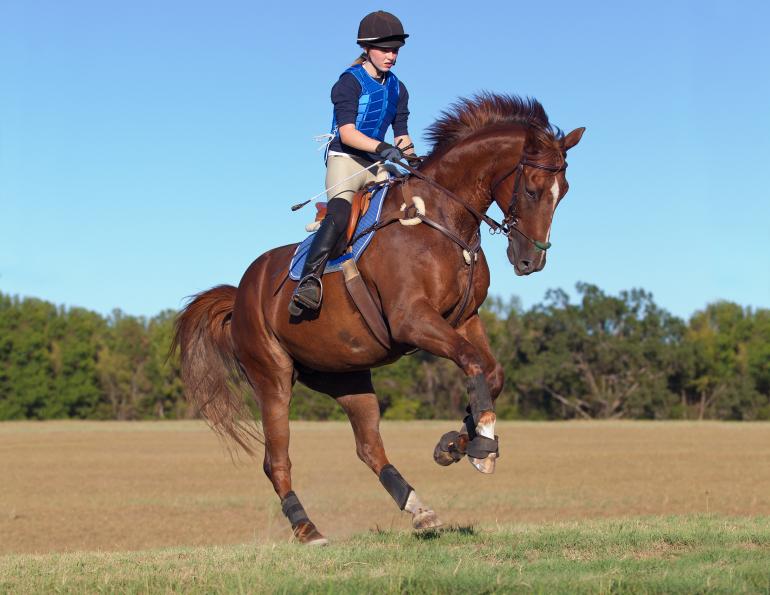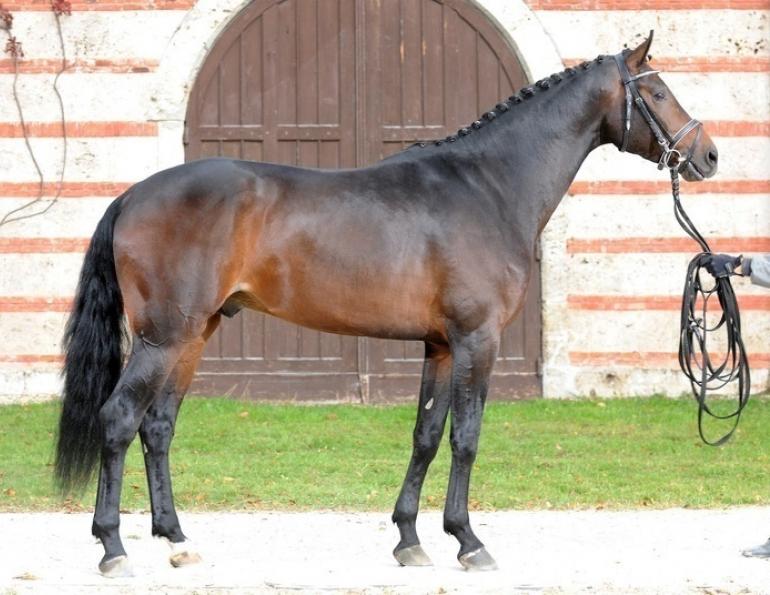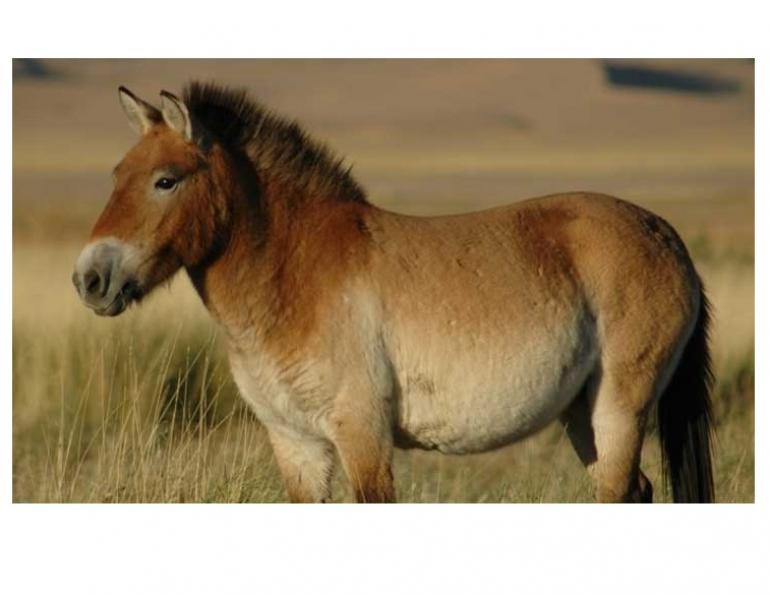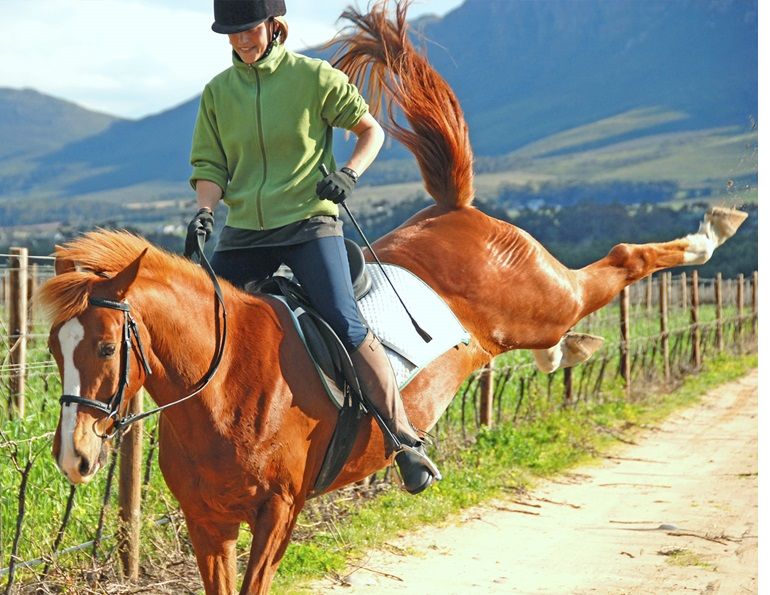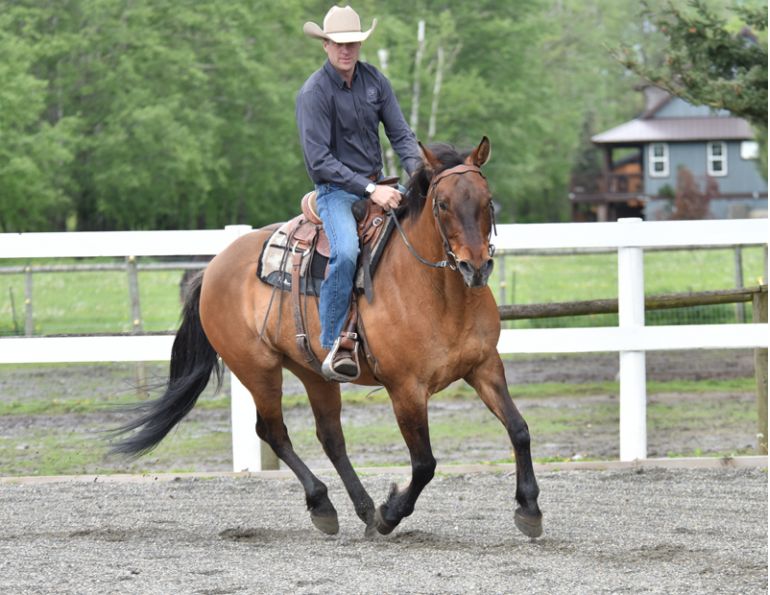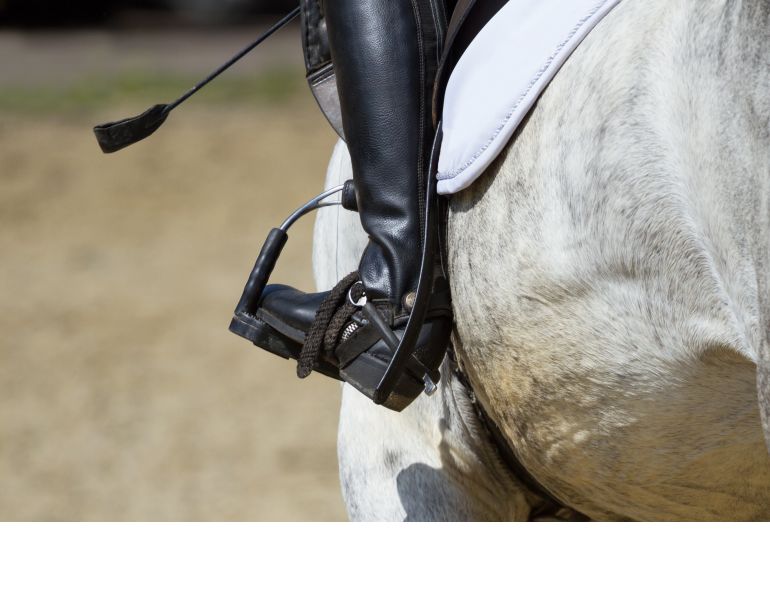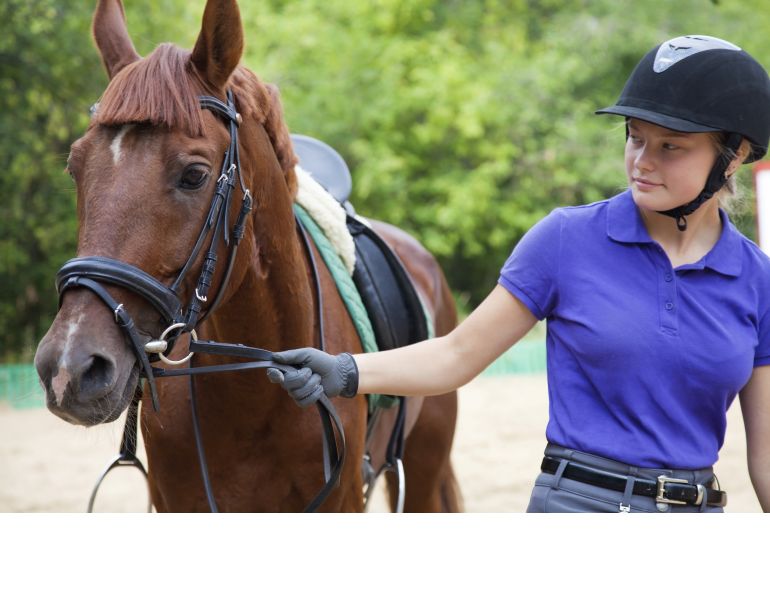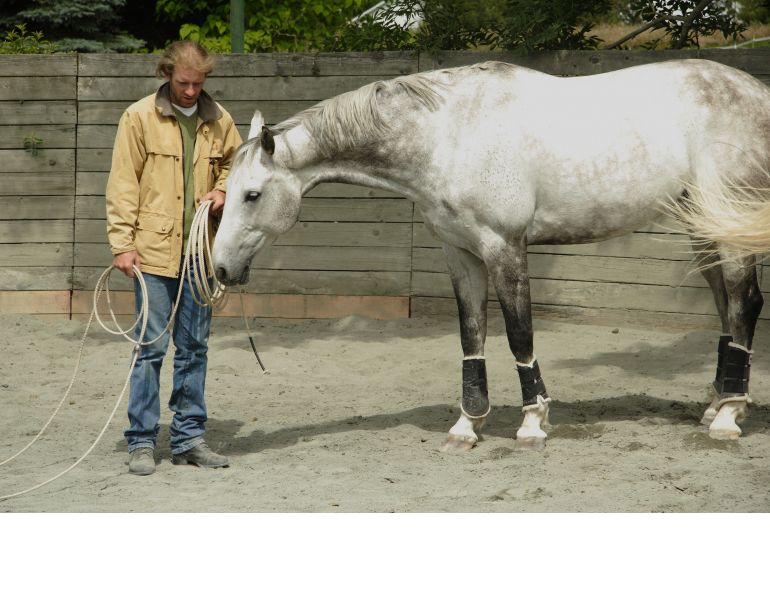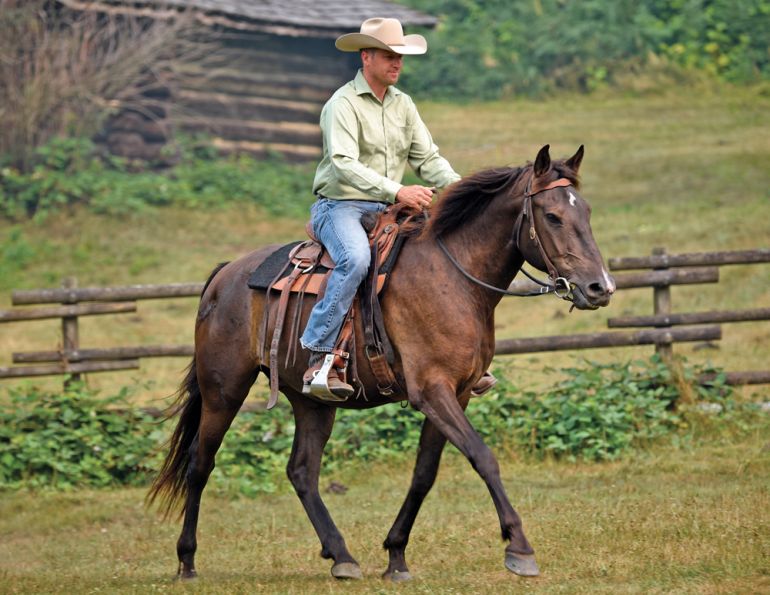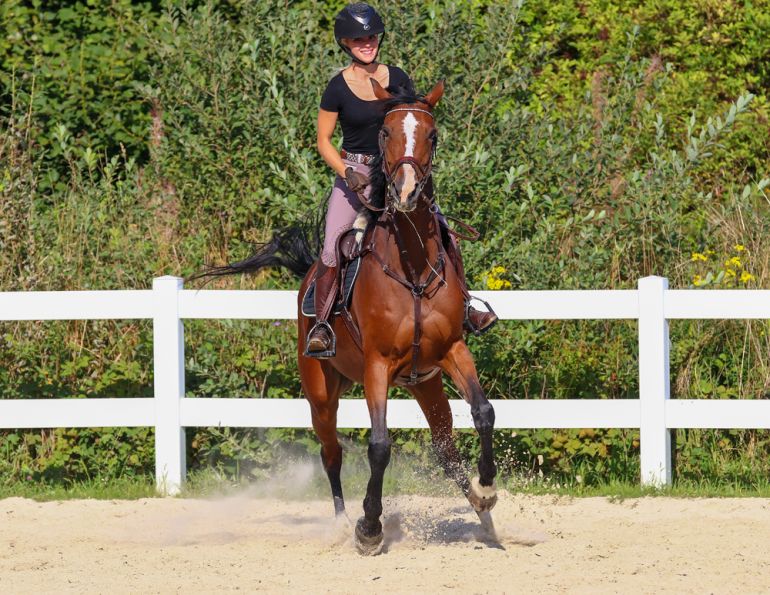By Will Clinging
Several years ago, one of my horses-in-training was Jax, a six-year-old Friesian-Hanoverian cross gelding with a few common issues which caused him to become unreliable to ride. As a result, his owner lost her confidence and thus her enjoyment of riding.
While working with him, I learned much about Jax and his behaviour. I learned that weakness in his back was making work under saddle difficult for him. As a result, we did a lot of tension-relieving exercises and strengthening work on the lunge line to help him build strength. During the work on the lunge I observed some things that gave me more insight into his behaviour.
The arena I was working in had a round pen set up in one end, and a manure tub against the wall on the outside to make cleaning up easier. My Border Collie, Sass, who was almost always with me and generally a big help with keeping the horses from escaping the round pen, liked to stop behind the manure tub. One day I was lunging Jax and things were going fine until Sass, who was doing her usual job on the outside of the round pen, came to a sliding stop behind the manure tub. As Jax passed by the tub, she took off again in the opposite direction. This startled Jax and he jumped forward. The movement caused some footing to spray up against the arena wall, startling him again, and this time he came completely unglued.
This was not an unusual situation, but this particular incident was different because I was convinced that Jax was not scared — he was mad. He was certainly intensely frustrated and that caused him to melt down.
It is important to understand the intentions behind a response, especially when the response is explosive. A fear-based reaction calls for a different training approach than that used for a confused response, and different again if the same action results from frustration. These three different outcomes make for three different identifiable intentions for the same stress factor. The intentions are important to understand.
Related: Riding With Fear - Part 1
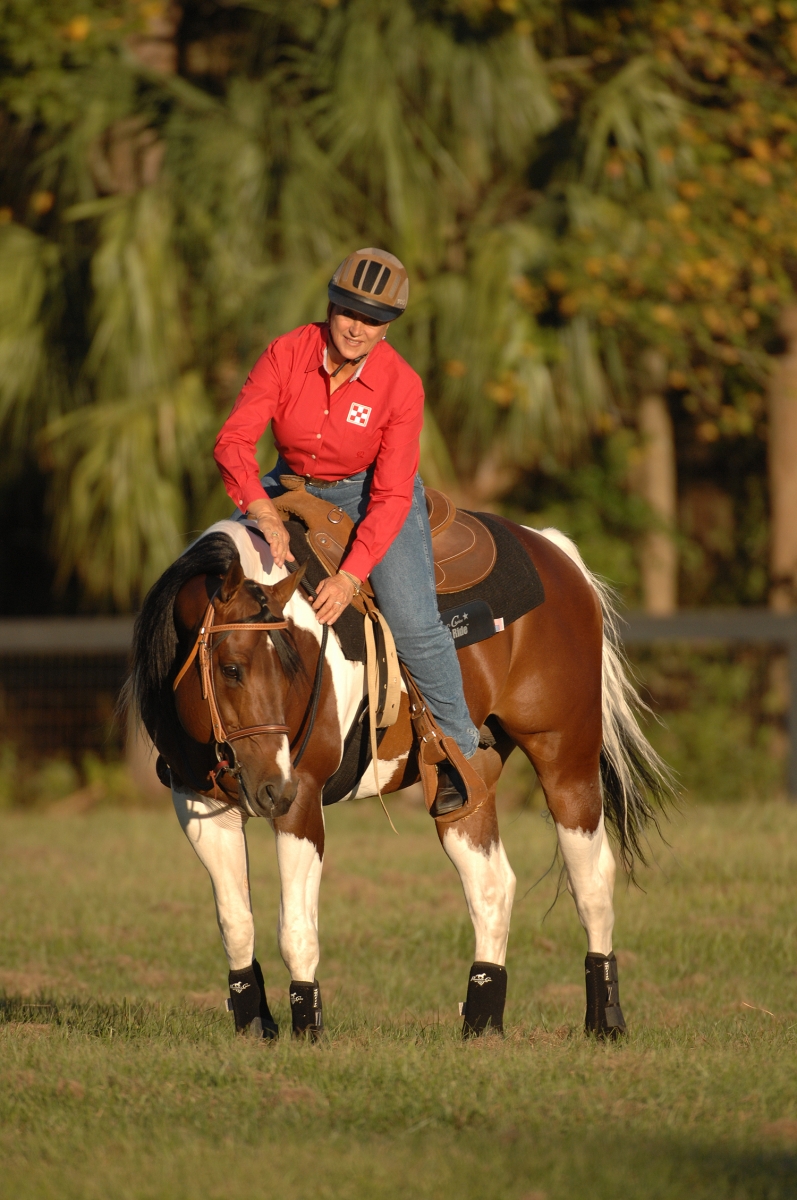
Offering your horse support when he is scared will boost his confidence in himself and you, and will empower him to be responsible for his own actions. Photo courtesy of Troxel
A fear-based reaction is a survival mechanism that shuts down the brain and fills the body with adrenaline, increasing intensity and speed to improve the horse’s odds of survival in a potentially life-threatening situation. Instinctive reaction can be seen as aggressive by its action but is defensive in its nature.
A confused response is more deliberate but based mostly on evasion or getting away from a stress factor that is upsetting but not overwhelming. Responses to stress factors not thoroughly understood or feared can also lead to responses that are in line with what we were asking of the horse but are performed accidentally.
A frustrated reaction can lead to what essentially amounts to a temper tantrum. It is usually a violent refusal that is not based on fear, used to remove the stress factor through avoidance, increased resistance, and, sometimes, aggressive behaviour. Such a response can mean that the horse has lost control of his emotions and has allowed frustration to control his actions.
Understanding the intentions behind the horse’s action is essential in determining whether to support an action or correct it. It also determines to what degree you should support or correct. This will affect the confidence of the horse either positively or negatively.
Related: Podcast - How Emotions Support Horsemanship
Basically, if the horse is scared and gets in trouble, he will become more afraid and rely more on his instincts to survive. This creates increased sensitivity to stress, causing him to panic more and more quickly with less and less pressure. This horse will not have the skills to think about the situation he is in, and he will not be rational when asked to perform simple tasks. He will assume that everything is a threat and will be unwilling and incapable of learning, with no confidence in himself or his handlers.
If the horse is scared and gets some support to remove his fears, he will learn that he can deal with his fears. This helps change his reactions to responses where he is not overwhelmed with fear and can start to understand what relevance things or actions have. This allows him to think about finding comfort, which in turn supports learning based on reward and encouragement, empowering him to be responsible for his own actions. That acceptance of responsibility will keep him out of trouble and increase his confidence.
When the horse’s explosive behaviour is due to frustration, it is more difficult to deal with. Correcting this behaviour requires a certain level of intensity. There is a fine line between aggression, confidence, and assertiveness. The amount of physical force used can be the same; the difference lies in the intention. Any action from us made in anger or with maliciousness is never acceptable. You need to have the intensity to get the horse’s attention and to strongly suggest that his behaviour is not acceptable, but you also need to show the kindness that says I will not hurt you no matter how badly you behave. It is very difficult to strike this balance of emotions.
As handlers, we have the great responsibility to really think, not just about what we are doing, but also about why we are doing it. The wrong course of action on the part of the handler could have serious consequences for the horse.
Now… back to Jax. When he exploded, I was pretty sure that his actions were caused by frustration. I was able to get Jax to pay attention again, slow down, and relax, but my tolerance of his explosiveness had to change. He needed to know that if he could not control his emotions, there would be a correction just as intense as his own actions had been. This, of course, did not go over well with him at first, but he relented and was able to regain his composure, even seeming apologetic. The next day, there was a similar outburst with a similar outcome for him. After that, he tried to be in better control of himself, and his attitude towards me changed for the better. He was always easy to deal with on the ground but became more affectionate and involved when I was with him.
Under saddle, he continued to grow stronger and gain confidence while ridden without his anxiety level increasing. He was not waiting for trouble and stopped expecting things to go wrong. There was still a lot of work to do before he was totally reliable, but he was on the path to recovering his confidence in himself and his rider. We needed to work on developing his balance, especially at canter, and strengthening his back. Although he remained a long-term project, I was feeling much more comfortable with his progress.
With a horse like Jax and many others out there, the road to success is slow and full of complications. Complicated horses often have complicated, multi-faceted solutions. Looking only at Jax’s behaviour would not give us all the answers; nor would addressing only his physical weakness. An open mind, empathy, and the willingness to change direction with the approach to training will eventually reveal the path to success.
Related: Make Me Worthy of My Horse
To read more by Will Clinging on this site, click here.
Photo: Shutterstock/Jim Noetzel



